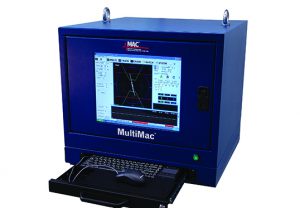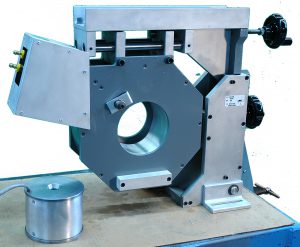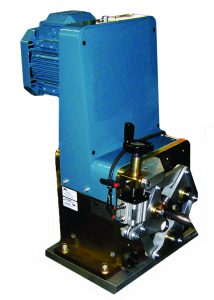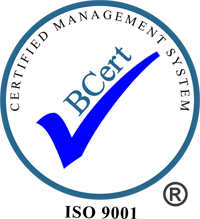EDDY CURRENT TECHNOLOGY IN NDT
MAC’s® Eddy Current Testing (ECT) systems incorporate computer-based test instruments and test coils that use two ECT coil technologies: encircling and sector coils, and spinning or rotary probe coils.
Encircling and sector Eddy Current coil tests perform in this manner:
- The product is passed through or adjacent to an electrical test coil, which has been excited by an alternating current.
- This induces a flow of eddy currents around the test material or in the case of a sector coil, in the area under the coil.
- Short, intermittent anomalies or flaws cause a variation in the eddy current pattern, which the instrument detects.
Rotary probe Eddy Current tests perform as follows:
- The product moves longitudinally through the rotating test probes resulting in a helical search pattern.
- As the probe passes over a defect, variations in the induced Eddy Current pattern are detected.
- The minimum flaw length, which can be consistently detected, is a function of the rotary speed of the probe and the throughput speed of the material.
- Rotary testing is the method of choice for detecting seam type surface defects in non-magnetic and magnetic grades of wire and bar.

Typical applications for encircling/sector ECT sensors are:
- Detect short surface and some subsurface defects, on or off-line, in magnetic and non-magnetic wire, bar and tube.
- Inspect welded tube for short ID or OD defects in the weld zone or on the full circumference.
- Test uniform cross sectional material, including squares, rectangles, hex and round.
- Inspect small diameter wire or tube for short defects.
- Check continuity and locate welds in single and multi-conductor insulated wire and cable
- When testing carbon steel, austentic stainless and alloy steels that have a permeability higher than 1, it is often necessary to saturate the material with a magnetic field. This has the effect of evening out the permeability variations in the material which would otherwise interfere with the ECT. Saturation coils are used to create the saturation field within which the ECT coil is paced.

Series 351 Coil Platform
Typical applications for rotary probe ECT sensors are:
- Detect seam type surface defects in cold drawn wire or cut length bar stock.
- Inspect in line with continuous wire operations such as wire drawing, parts forming, re-spooling, or straight and cut.
- Inspect cut lengths, usually off-line.
- Test parts, such as small shafts and bearings for longitudinal surface defects.
- Eddy Current technology can be used on ferrous and non-ferrous materials.

Model 150E Rotary

